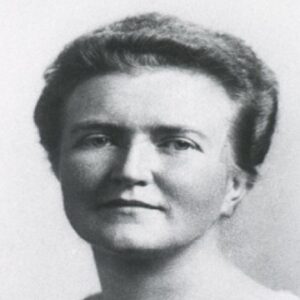Dr. Janet Elizabeth Lane-Claypon was an English physician who pioneered the use of cohort and case-control studies. She had her primary education at home until she was twenty-two and then went on to acquire her PhD and MD in quick succession. This made her an early ‘Doctor-doctor’. She later worked in research, first on milk bacteriology and biochemistry, then on the impact of the ‘Poor Law’ on children. She found that breastfed newborns gained weight faster than those fed cow’s milk. Moreover, the research disproved the widespread idea that boiling milk renders it unnutritious. She later advocated for child care, midwifery training, and parental services reform. She later worked in epidemiology, focusing on breast cancer, and devised the ‘case-control study.’ She studied uterine, lip, tongue, and skin malignancies. She had 32 publications to her name.
Early Childhood of Janet
Janet Lane-Claypon was born on 3 February 1877 in Boston, Lincolnshire, UK. Her affluent banker father was a magistrate. Edith Lane-Claypon was her mother.
Janet’s childhood is unknown except that she was an intellectual kid who received her early schooling at home.
In 1898, she enrolled at University College London, where she studied physiology with Ernest H. Starling, a pioneering British physiologist.
Janet Lane-Claypon received a gold award and an exhibition for her studies on rabbit ovary in 1902. Then she began her PhD studies.
In 1905, she earned her PhD in Physiology from E.H. Starling and E.A. Sharper-Schafer. Her thesis focused on the ovary’s growth and hormonal regulation of lactation. Francis Marshall acknowledged the findings extensively in his 1910 textbook, ‘The Physiology of Reproduction.’
Satisfied with her progress, she enrolled in the London School of Medicine for Women, earning her MBBS and MD in 1907. So she became an early example of the then rare “Doctor-doctor” phenomenon.
As a Scholar
Janet Lane-Claypon joined the Lister Institute of Preventive Medicine as a research scholar in 1907. With a British Medical Society scholarship, she began studying milk bacteriology and biochemistry.
Her studies found hemolytic factors in milk and the influence of heating on bacterial contamination. More importantly, it disproved the myth that boiling milk destroys its nutritional value. It was later released as a book.
To investigate mother and child health initiatives in Europe, she obtained a Lister Jenner Fellowship in 1909. She first examined the impact of the ‘Poor Law’ on English youngsters before traveling to Berlin to see the facilities.
After comparing child death rates in England and Germany, she urged the adoption of the German child welfare strategy ‘Kindersyl’. ‘Poor-Law Babies in London and Berlin’ was published in 1910. She became known as a reformer of child care after this.
Janet as an Educator
Janet Lane-Claypon became a lecturer in physiology and hygiene at Battersea Polytechnic in 1910. During this time, she continued her child welfare study, visiting Sweden and other countries.
She studied two groups of newborns, one breastfed and the other fed cow’s milk. She used statistics to prove that breastfed babies gained weight faster than formula-fed newborns. She later advocated for improved midwifery and breastfeeding.
In 1912, she left Battersea Polytechnic to teach at King’s College for Women.
From 1912 until 1916, she was also the London Government Board’s Assistant Medical Inspector.
She was appointed Dean of the Household and Social Science Department at King’s College for Women in 1916. In 1916, the Medical Research Committee asked her to prepare a book on newborn nutrition. This was in honor of her extensive studies.
‘Milk and Its Hygiene Relations’ was published in 1916. A few additional books on hygiene followed. It was published in 1920, and Hygiene of Women and Children in 1921. In her latter work, she stressed personal health.
Back To Research
Janet Lane-Claypon left King’s College for Women in 1923 to join the Ministry of Health’s newly founded Cancer Committee. She was asked to conduct a literature review on surgical therapy of breast cancer.
Her first article on the subject was ‘Cancer of the Breast and Surgical Treatment: A Literature Review’ (1924). A wider investigation on the same topic was then requested.
Lane-Claypon planned to use 500 women with breast cancer and 500 healthy women as controls (women without cancer, but having broadly the same conditions of life). A fifty-question quiz was also created.
She also realized that without the aid of numerous hospitals, she could not generate enough cases (500 each category). She phoned six London and three Glasgow hospitals. She then examined the situations using many variables.
A Further Report on the Cancer of the Breast with Special Reference to Its Associated Antecedents’ was published in 1926. It is now regarded as a breast cancer milestone.
She then started another study on breast cancer, this time on 367 patients up to 10 years post-op. This is the disease’s first end-result study.
In 1928, she wrote ‘Report on the Late Results of Operation for Breast Cancer’.
She later studied uterine cancer, comparing the survival rates of individuals with cervical and uterine cancer, as well as breast and uterine cancer. She later studied lip, tongue, and skin malignancies. She also looked at the efficacy of other treatments.
Major Projects of Janet
‘A Further Report on the Cancer of the Breast with Special Reference to Its Associated Antecedents’ was published in 1926. It was the first published casecontrol study including an epidemiologic questionnaire.
Personal Legacy of Janet
After much courtship, Janet Lane-Claypon married Sir Edward Rudolph Forber in 1929. She left her prosperous career soon after her wedding and moved to Seaford, Sussex, with her husband. Her last article was in her married name.
She spent several years in Seaford, a tranquil household existence. She died on July 17, 1967, aged 90.


